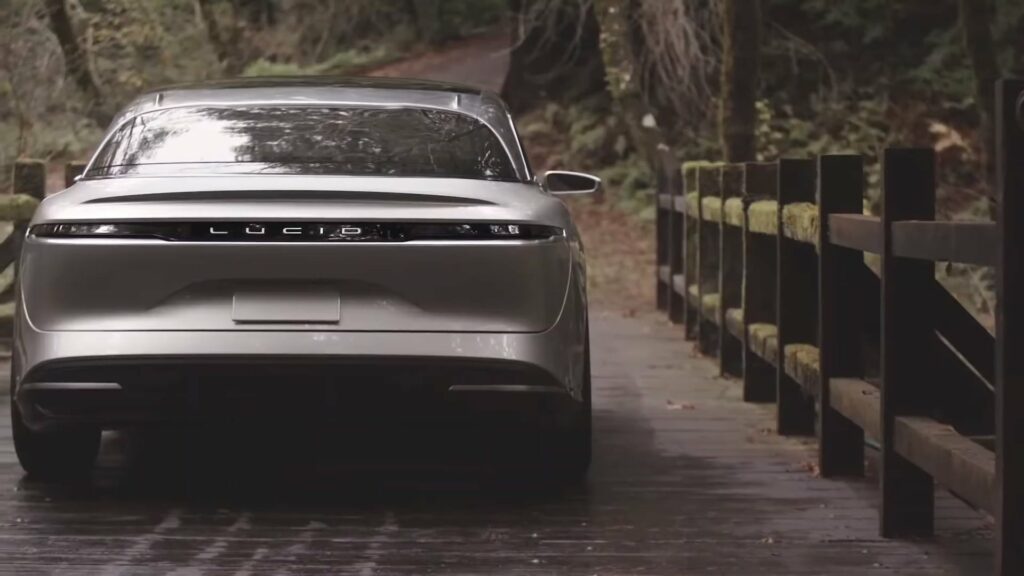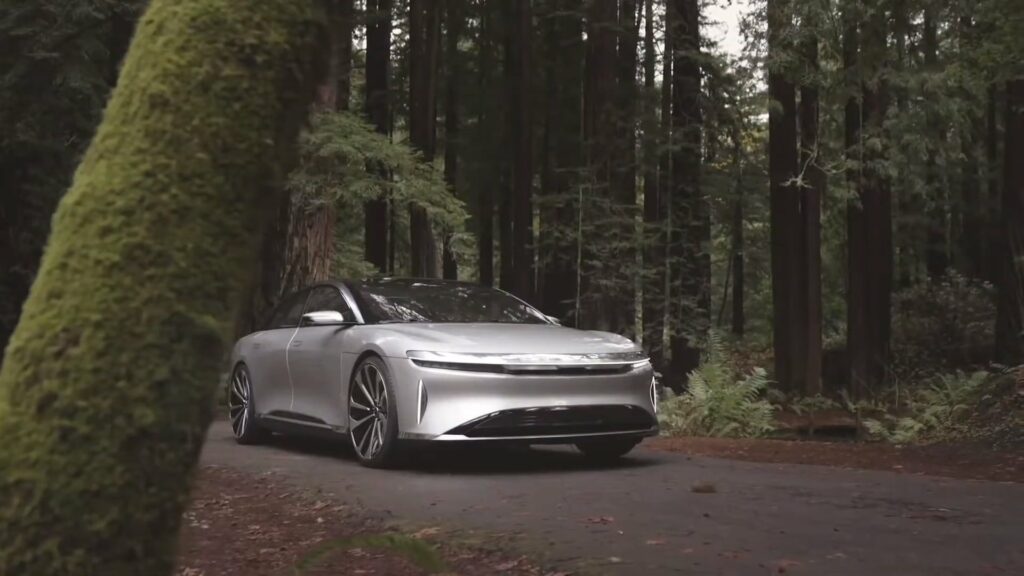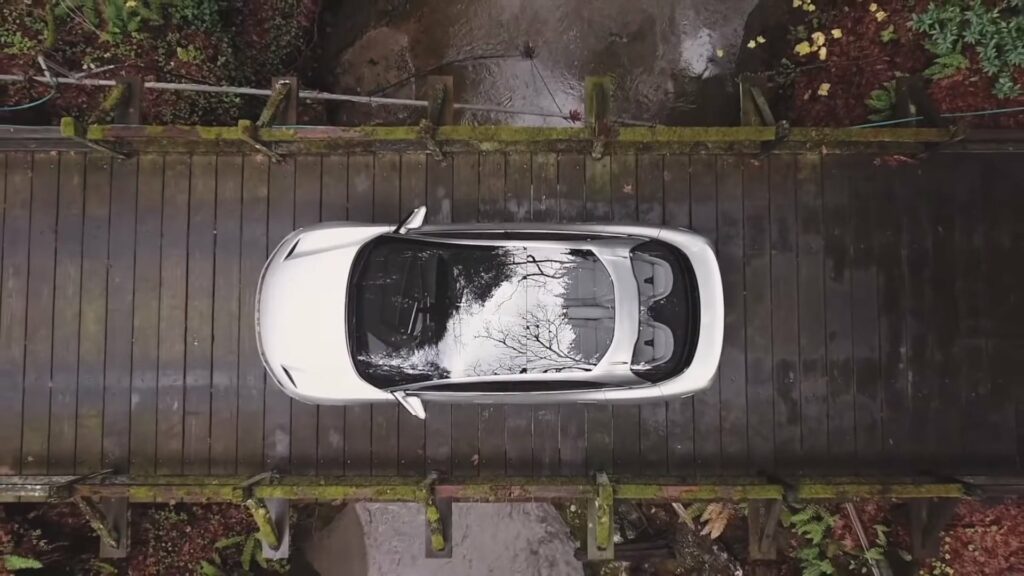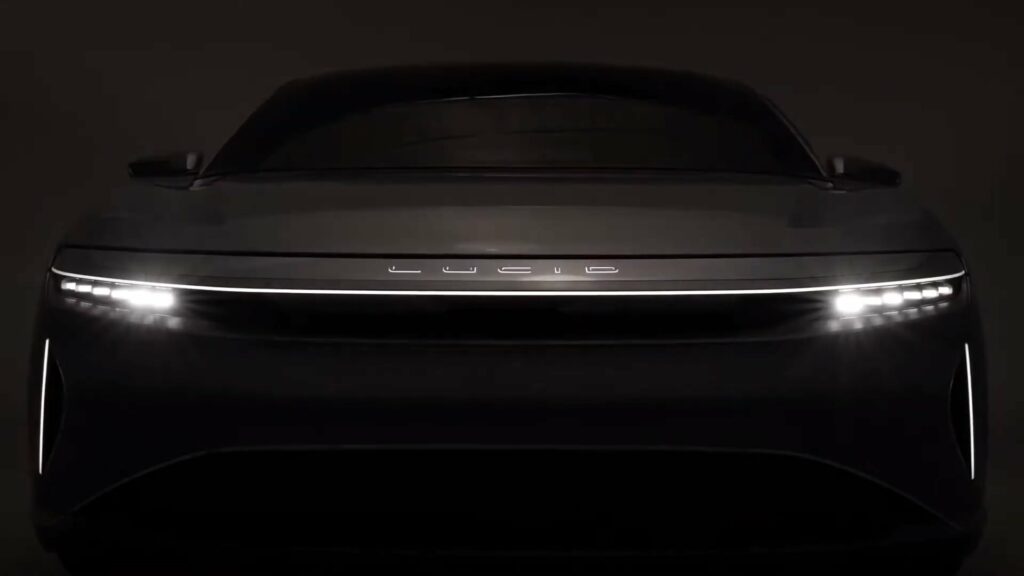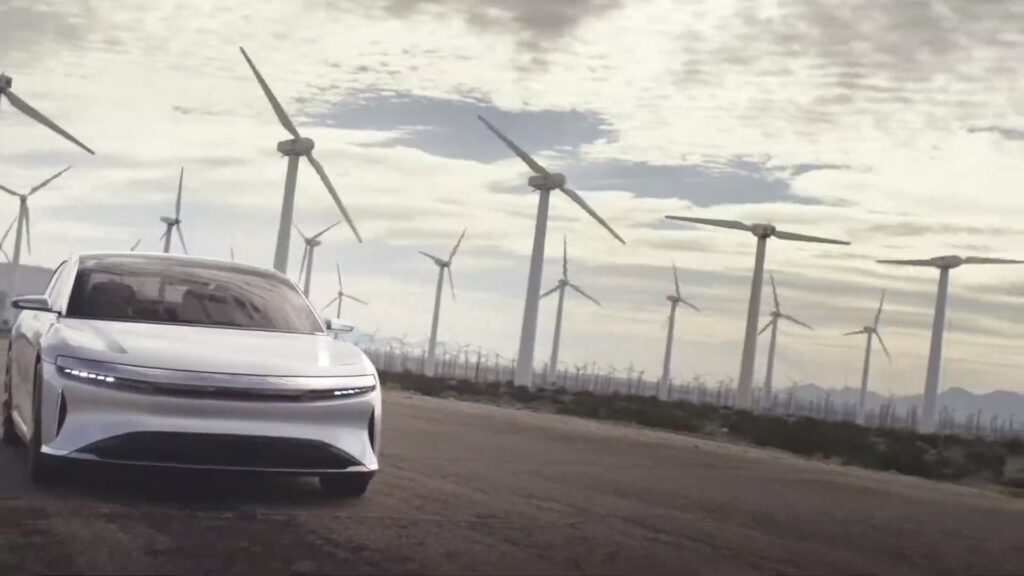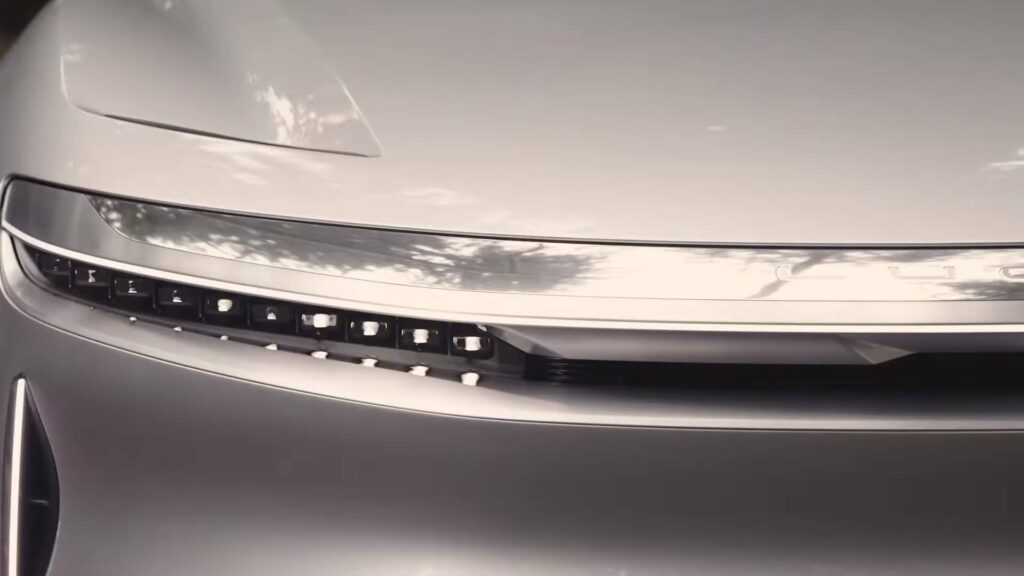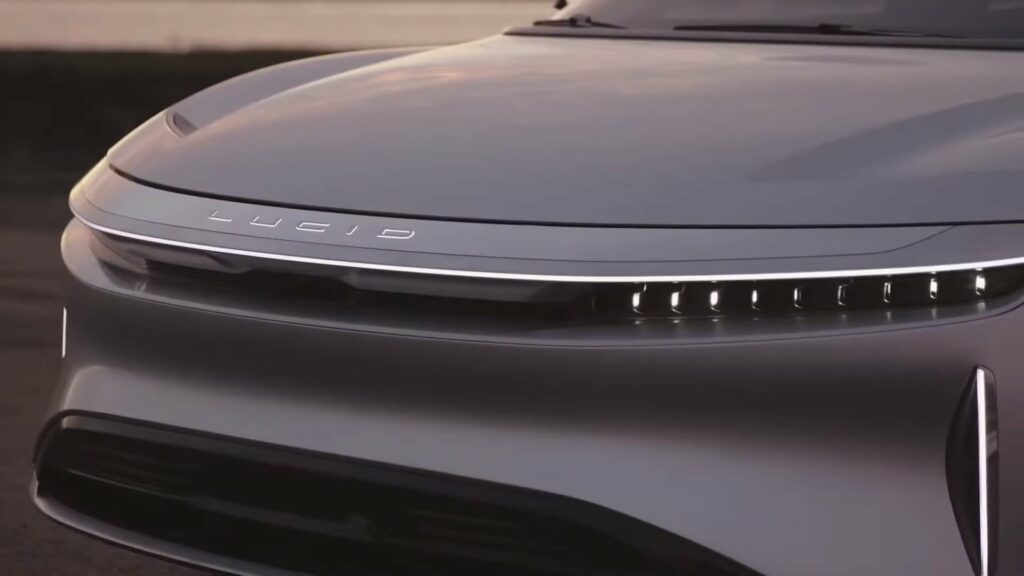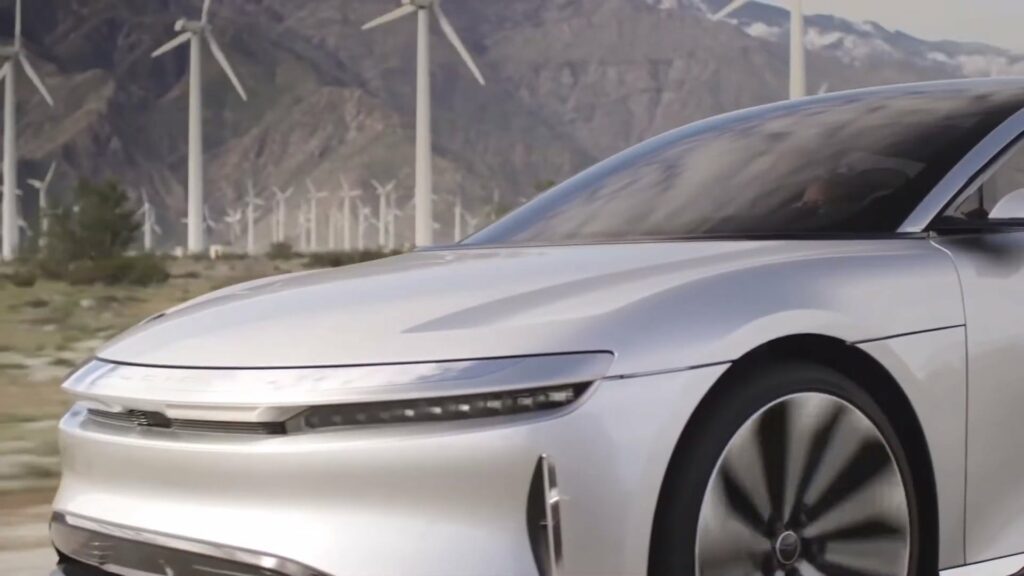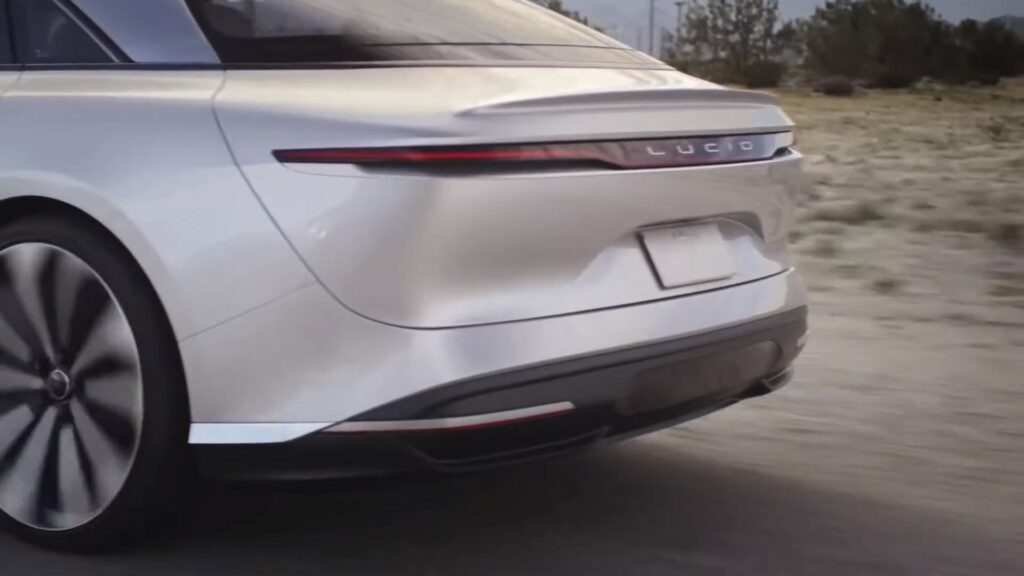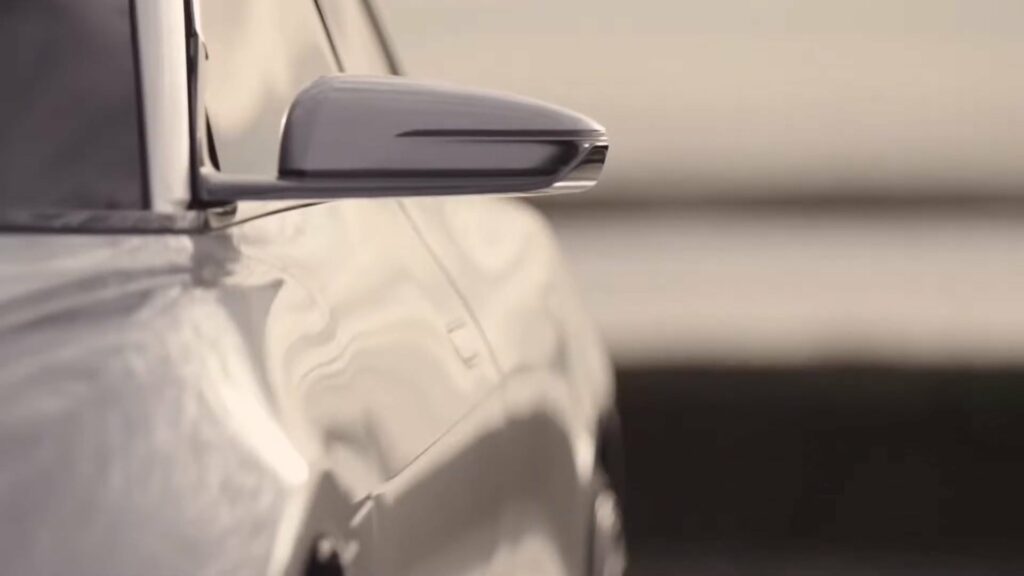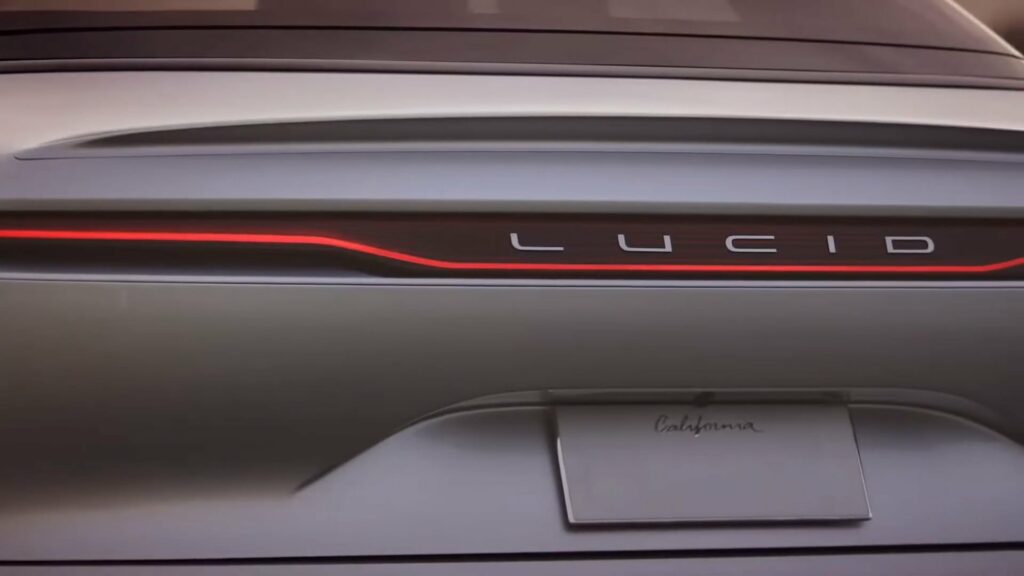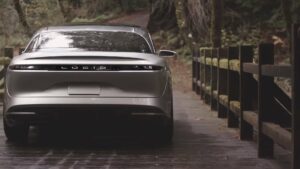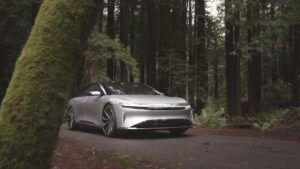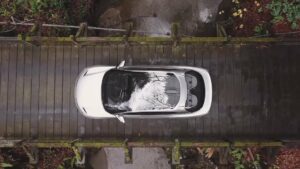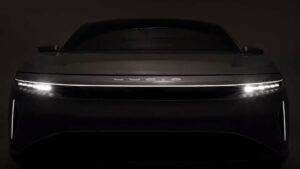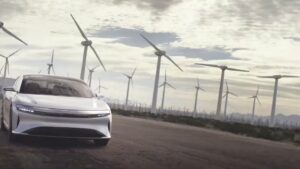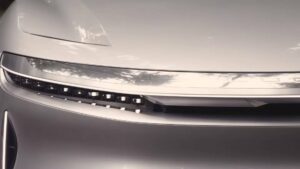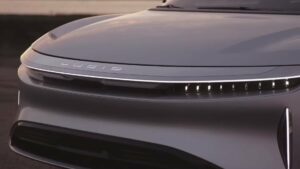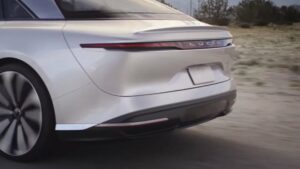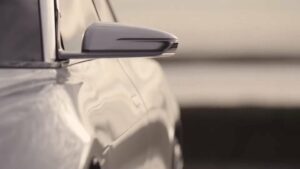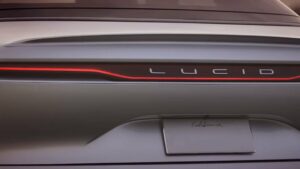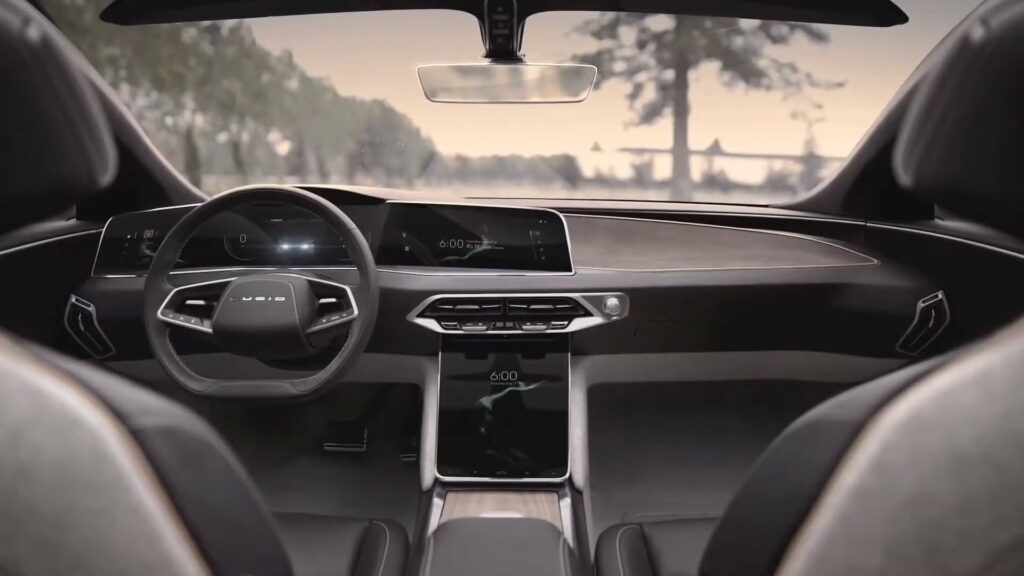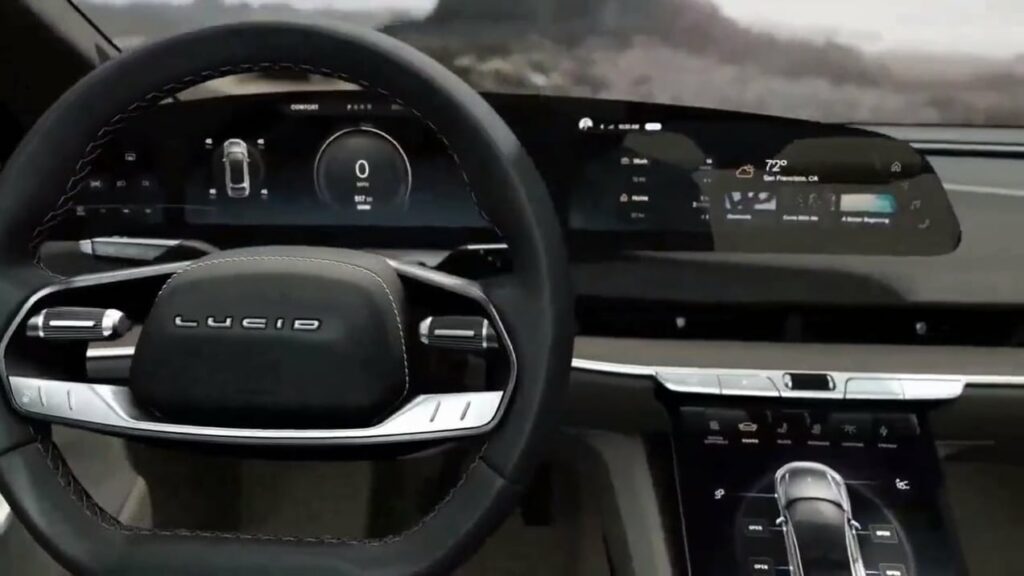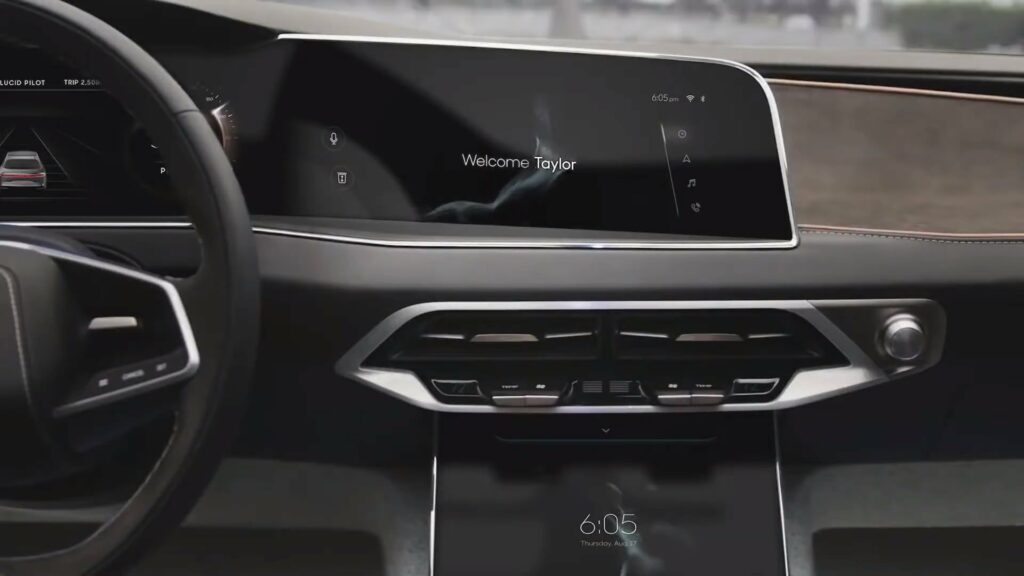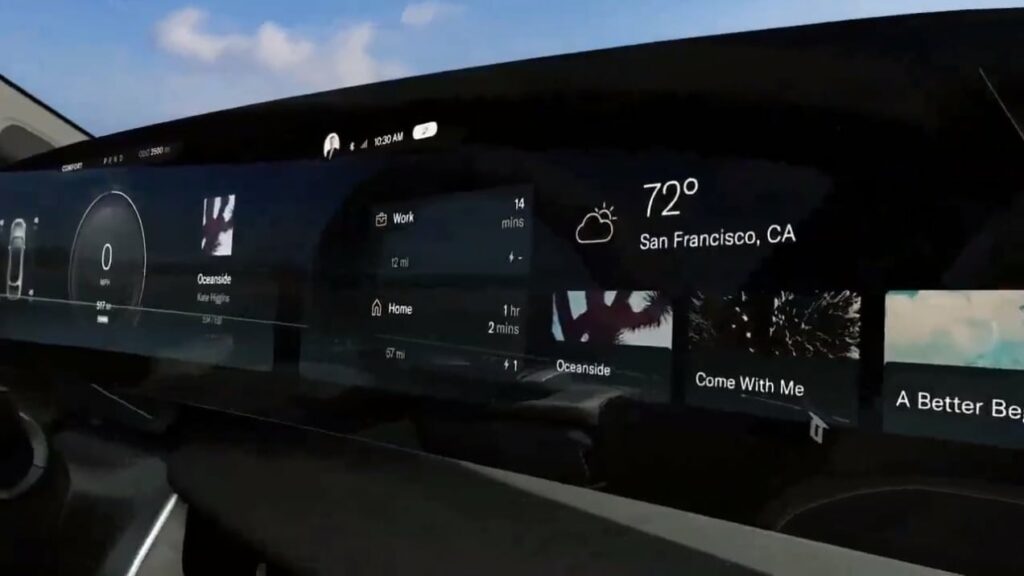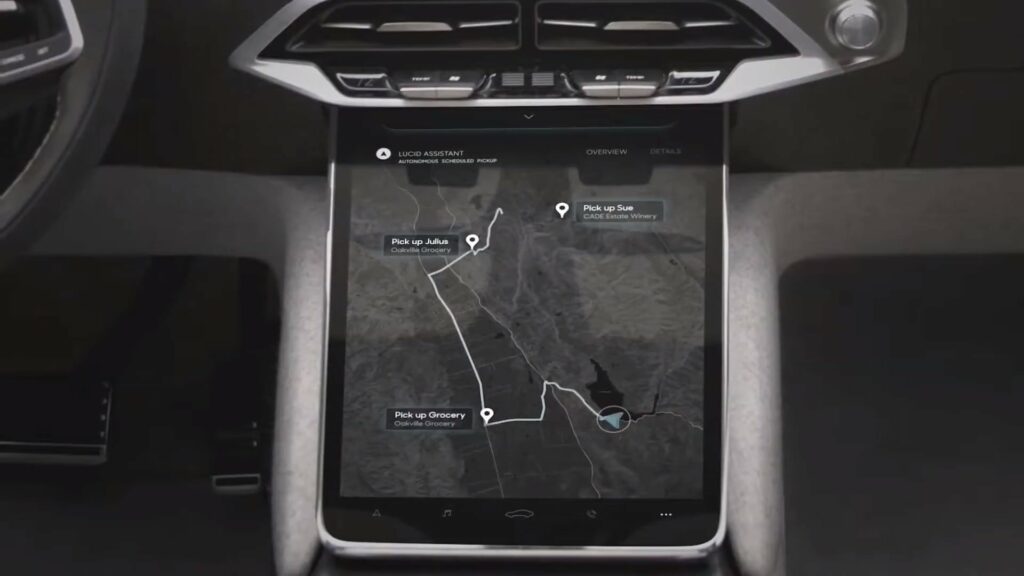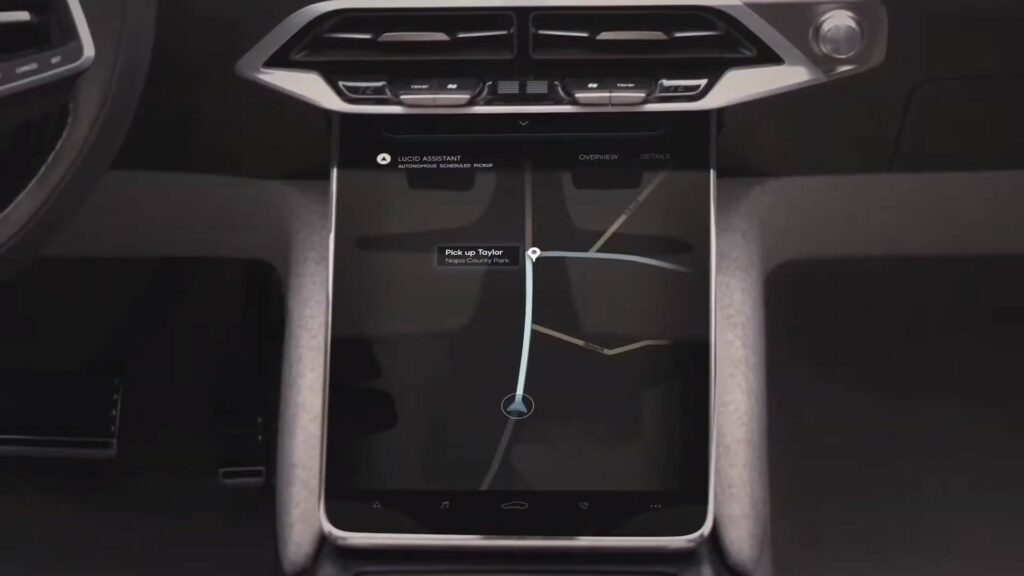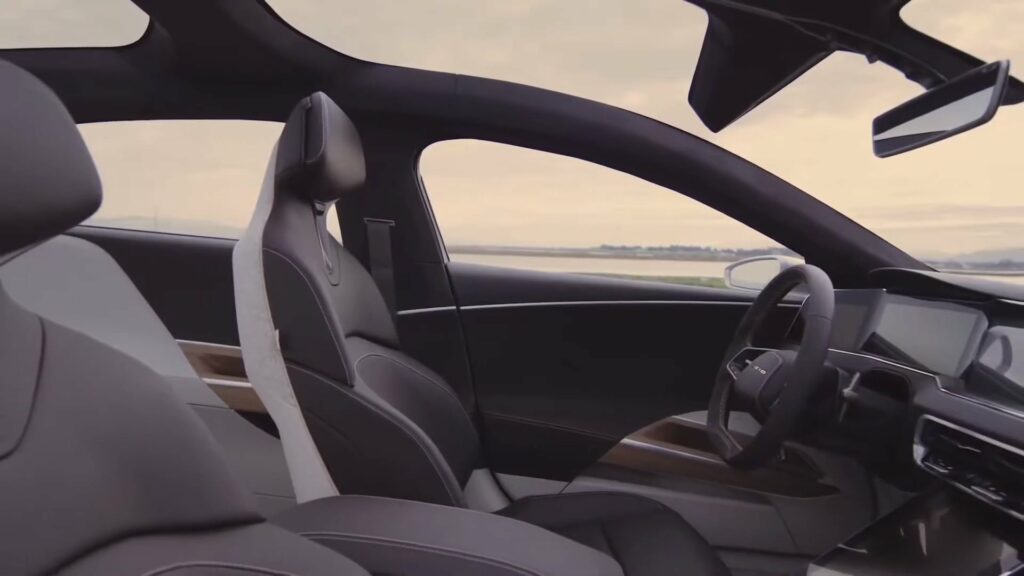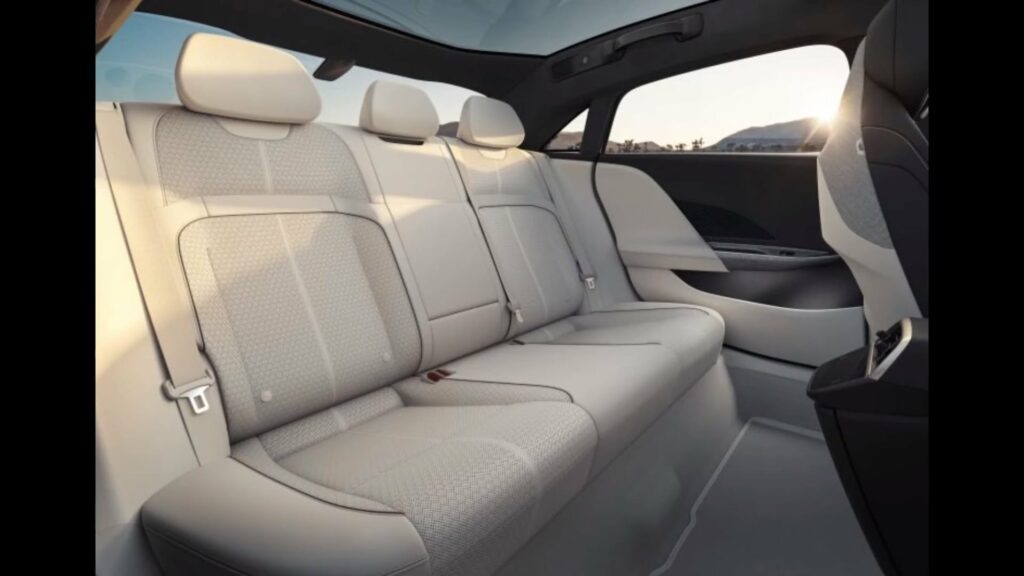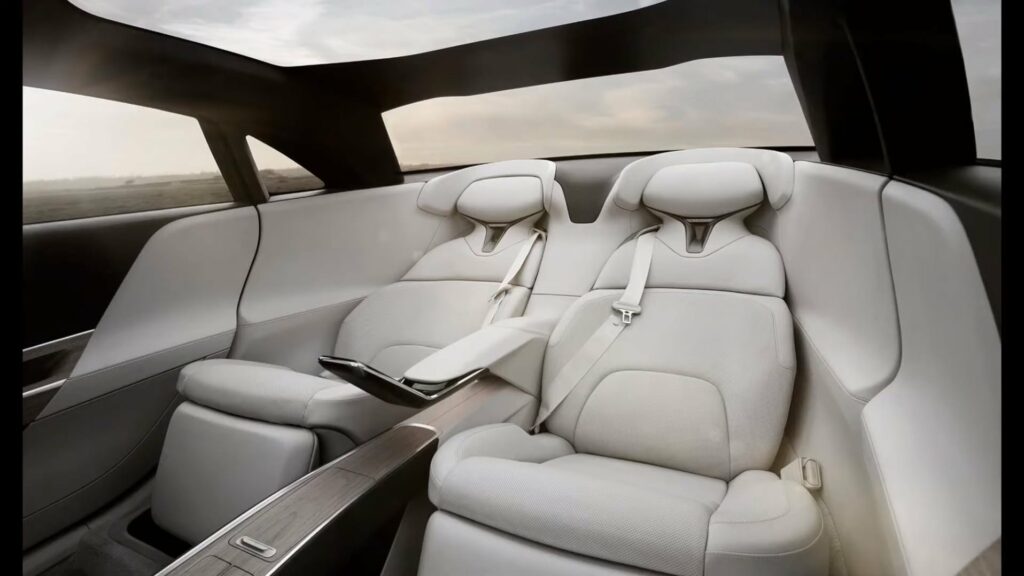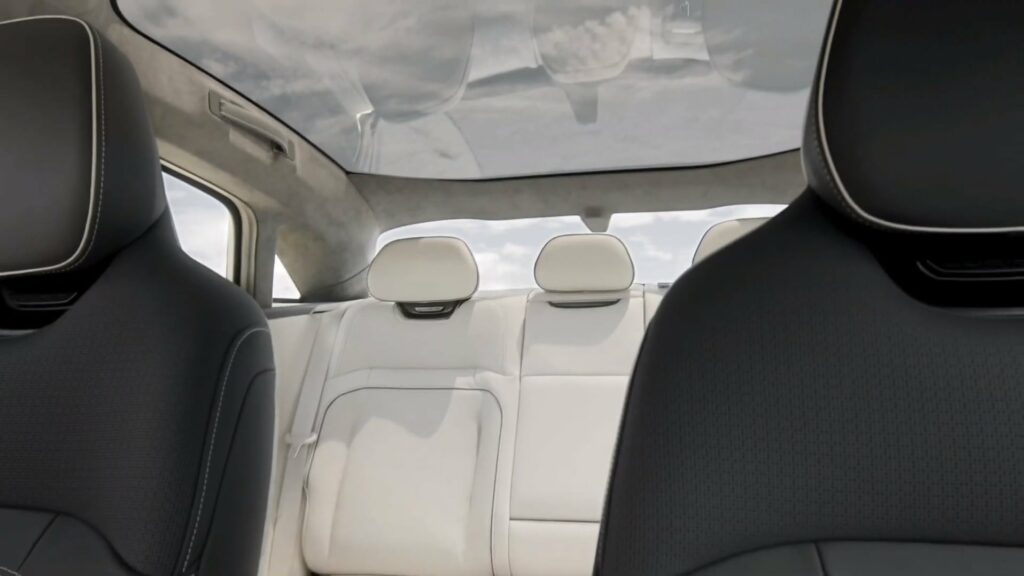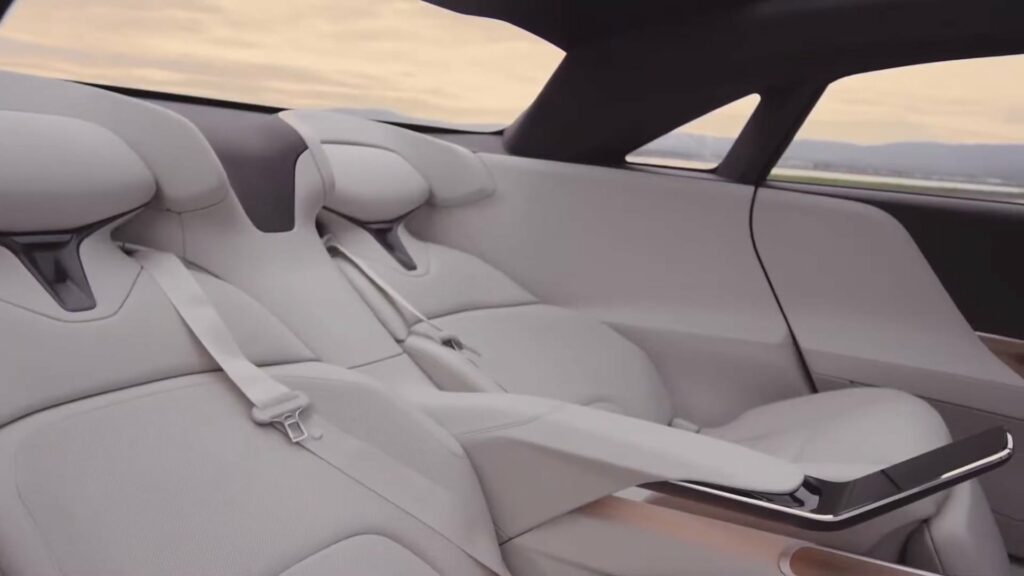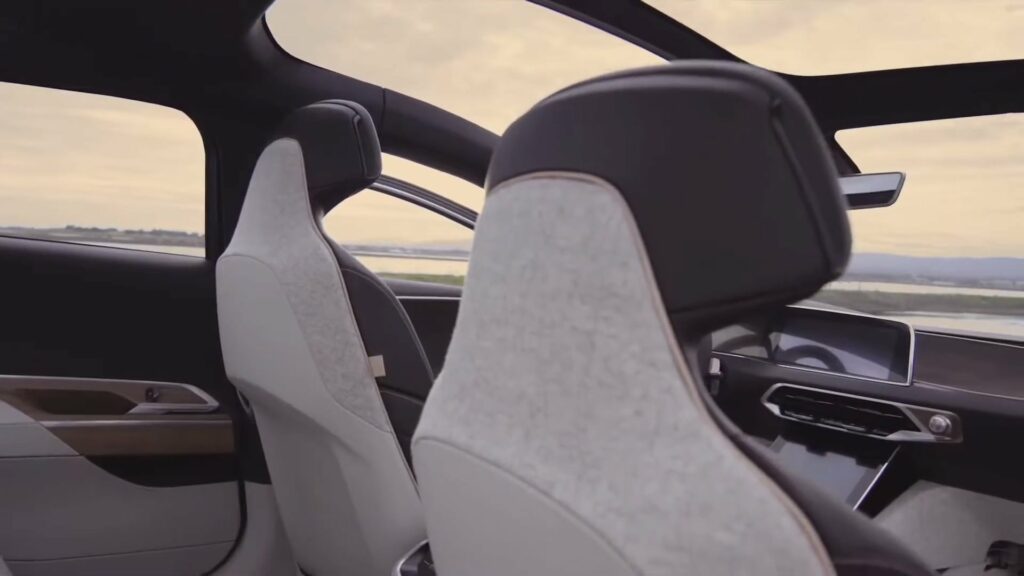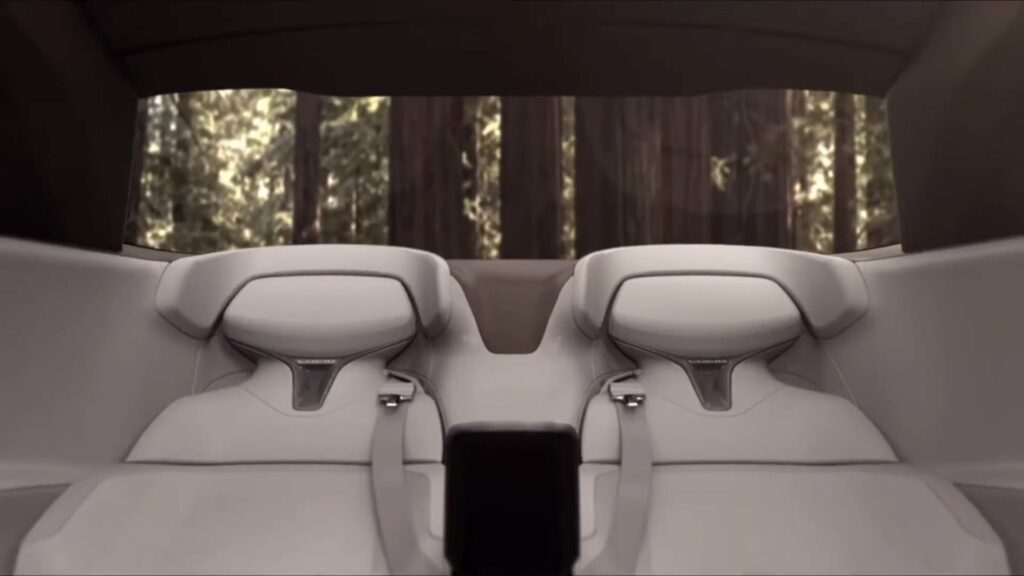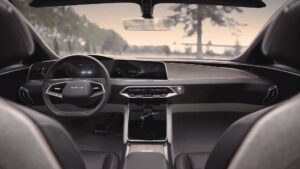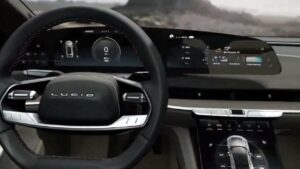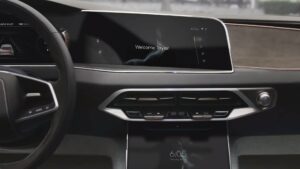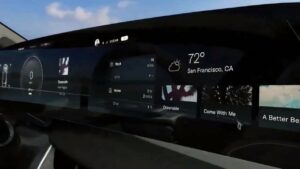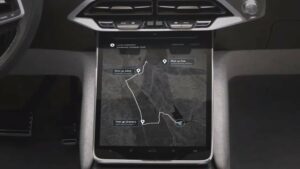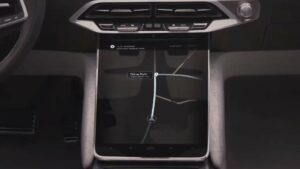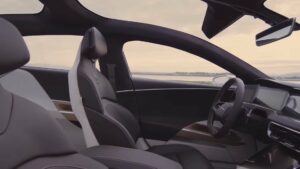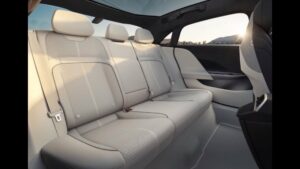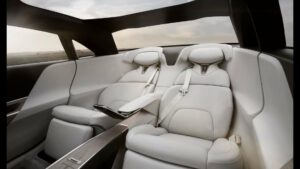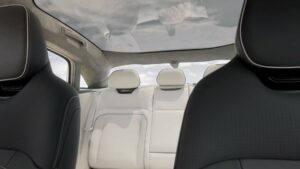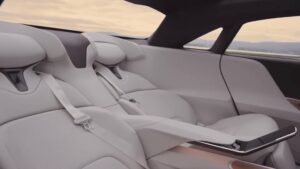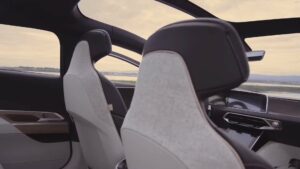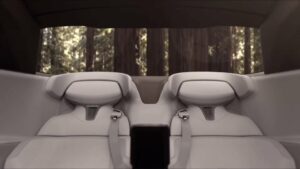Lucid Air Touring
The Lucid Air Touring is a luxury electric sedan produced by the American car company Lucid Motors. It is the base model in the Lucid Air lineup, below the midsize Lucid Air Grand Touring and the high-performance Lucid Air Dream Edition.
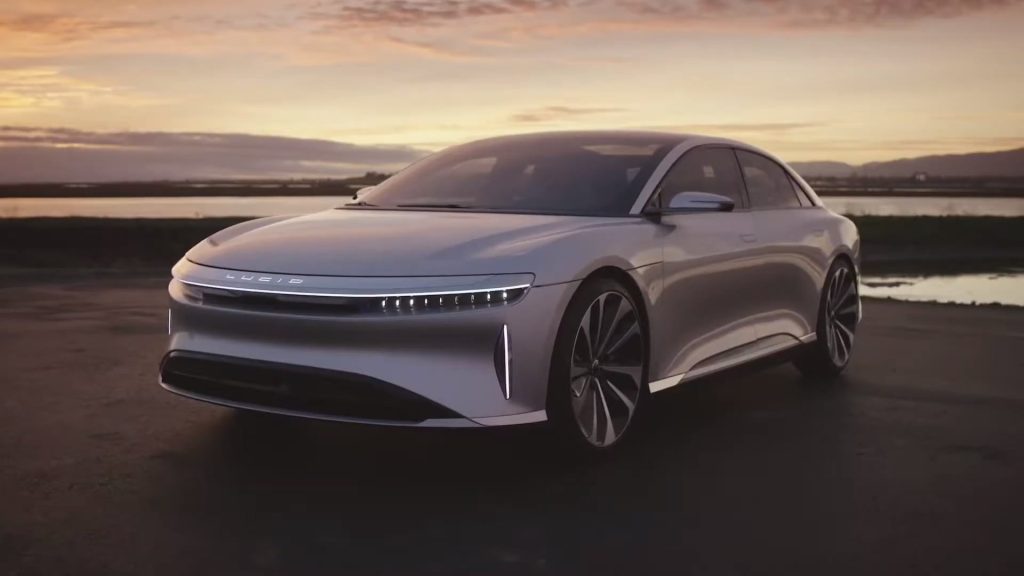
The Lucid Air Touring features a twin-engine electric drivetrain with a combined output of 462 kW, allowing it to accelerate from 0 to 100 km/h at 60 mph in less than 3.4 seconds. It has a top speed of about 250 km/h and a range of 530 km on a single charge, making it one of the longest-range electric vehicles currently available.
The interior of the Lucid Air Touring is designed to be spacious and comfortable, with first-class materials and finishes. It features a 34-inch curved glass cockpit display, a 10-speaker audio system, and a number of advanced driver assistance features.

All in all, the Lucid Air Touring is a top-of-the-line luxury electric vehicle that offers an impressive range, advanced technology, and a comfortable and luxurious interior. It competes with other luxury electric sedans such as the Tesla Model S, Audi e-tron GT, and Porsche Taycan.
| Performance | |
| Acceleration 0 – 100 km/h | 3.4 sec |
| Top Speed | 250 km/h |
| Electric Range | 530 km |
| Total Power | 462 kW (628 PS) |
| Total Torque | No Data |
| Drive | AWD |
| Battery and Charging | |
| Battery Capacity | 88.0 kWh |
| Battery Useable | 85.0 kWh |
| Europe | |
| Charge Port | Type 2 |
| Port Location | Left Side – Front |
| Charge Power | 22 kW AC |
| Charge Time (0->530 km) | 4h45m |
| Charge Speed | 110 km/h |
| Fastcharge Port | CCS |
| FC Port Location | Left Side – Front |
| Fastcharge Power (max) | 300 kW DC |
| Fastcharge Time (53->424 km) | 16 min |
| Fastcharge Speed | 1390 km/h |
| Energy Consumption | |
| EVDB Real Range | |
| Range | 530 km |
| Vehicle Consumption | 160 Wh/km |
| CO2 Emissions | 0 g/km |
| Vehicle Fuel Equivalent | 1.8 l/100km |
|
Rated = official figures as published by manufacturer. Rated consumption and fuel equivalency figures include charging losses.
|
|
|
Vehicle = calculated battery energy consumption used by the vehicle for propulsion and on-board systems.
|
|
| Real Energy Consumption Estimation between 113 – 218 Wh/km | |
| City – Cold Weather * | 172 Wh/km |
| Highway – Cold Weather * | 218 Wh/km |
| Combined – Cold Weather * | 191 Wh/km |
| City – Mild Weather * | 113 Wh/km |
| Highway – Mild Weather * | 167 Wh/km |
| Combined – Mild Weather * | 138 Wh/km |
|
Energy use for each trip will vary considerably depending on the driver and the conditions. Therefore, we have provided a range of estimates which can be useful in developing an understanding of the potential benefits of this technology. |
|
| Dimensions and Weight | |
| Length | 4970 mm |
| Width | 1950 mm |
| Width with mirrors | No Data |
| Height | 1410 mm |
| Wheelbase | No Data |
| Weight Unladen (EU) | 2150 kg |
| Gross Vehicle Weight (GVWR) | No Data |
| Max. Payload | No Data |
| Cargo Volume | No Data |
| Cargo Volume Max | No Data |
| Cargo Volume Frunk | No Data |
| Roof Load | No Data |
| Tow Hitch Possible | No Data |
| Towing Weight Unbraked | No Data |
| Towing Weight Braked | No Data |
| Vertical Load Max | No Data |
| Miscellaneous | |
| Seats | 5 people |
| Isofix | No Data |
| Turning Circle | No Data |
| Platform | No Data |
| Car Body | Sedan |
| Segment | F – Luxury |
| Roof Rails | No Data |
| EV Dedicated Platform | No Data |
Home and Destination Charging (0 -> 100%)
A public charging station is required to use the highest possible charging rate. The EVSE/charging station’s charging capacity affects how long it takes to fully charge the battery. The table below shows all possible options for fully charging the Lucid Air Touring.
In Europe, plugging an electric car into an outlet is often as easy as plugging it into a household outlet, but there are differences from country to country. The table below shows the different ways to charge the Lucid Air Touring, but in some countries some chargers may not be available.
Type 2 ( IEC 62196)

| Charging Point | Max. Power | Power | Time | Rate |
| Wall Plug (2.3 kW) | 230V / 1x10A | 2.3 kW | 43h30m | 12 km/h |
| 1-phase 16A (3.7 kW) | 230V / 1x16A | 3.7 kW | 27h15m | 19 km/h |
| 1-phase 32A (7.4 kW) | 230V / 1x32A | 7.4 kW | 13h30m | 39 km/h |
| 3-phase 16A (11 kW) | 400V / 3x16A | 11 kW | 9h15m | 57 km/h |
| 3-phase 32A (22 kW) | 400V / 3x32A | 22 kW | 4h45m | 110 km/h |
Fast Charging (10 -> 80%)
If you want to enjoy driving an electric car, one of the most important features to consider is the number of miles per hour the car can travel while charged. This is called the “range” of the car. All electric cars have a certain range, even if they are 100% charged. This is because they do not have an internal combustion engine to lean on if you need to drive a long distance.
Max. Power: The maximum power provided by the charging point
Avg. Power: The average power provided by the charging point during a session of 10% to 80%.
Time: the time it takes to charge from 10% to 80%
Speed: the average charging rate during the session of 10% to 80%
Combined Charging System (CCS Combo 2)
| Charging Point | Max. Power | Avg. Power | Time | Rate |
| CCS (50 kW DC) | 50 kW | 50 kW | 75 min | 290 km/h |
| CCS (100 kW DC) | 100 kW | 95 kW | 40 min | 550 km/h |
| CCS (150 kW DC) | 150 kW | 135 kW | 28 min | 790 km/h |
| CCS (175 kW DC) | 175 kW | 150 kW | 25 min | 890 km/h |
| CCS (350 kW DC) | 300 kW | 240 kW | 16 min | 1390 km/h |
| Brand | Lucid |
| Model | Air Touring |
| Body Style | Sedan |
| Car Engine | electric |
| Motor power | 462 |
| Battery Energy, kWh | 88.0 |
| Power reserve (NEDC/EPA/WLTP), km | - / - / 530 |
| Level Charging (230/400/DC), hours | - / 4.45 / 0.16 |
| Electrical Acceleration, 0-100 km/h (0-62.1 mph) in sec | 3.4 |
| Top Speed, km/h | 250 |

